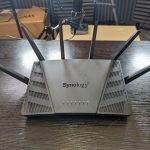
Synology RT6600ax Router Review Chapters Synology RT6600AX Review, ALL Parts - HERE Synology RT6600AX Review, Part 1, Unboxing & Design - HERE Synology RT6600AX Review, Part 3, Software, 5.9Ghz & Verdict - HERE |
Synology RT6600ax Router Review – Ports & Connections
It would be fair to say that the lion share of the attention that has been directed towards the Synology RT6600ax router has been about its wireless capabilities, however, the physical connectivity and general LAN standards of the system are a good mix too. That said, the RT6600ax does appear to lose a few things over the older RT2600ac that some users might be bugged by, such as the lack of an SD card slot or reduced number of USB ports, but this is largely mitigated by the inclusion of a 2.5gigabit ethernet (2.5G copper connection) on this router. This is the first example of the adoption of 2.5GbE by Synology in their entire hardware portfolio, which we hope is the start of more widespread adoption in their NAS series over the rather long in the tooth 1GbE.
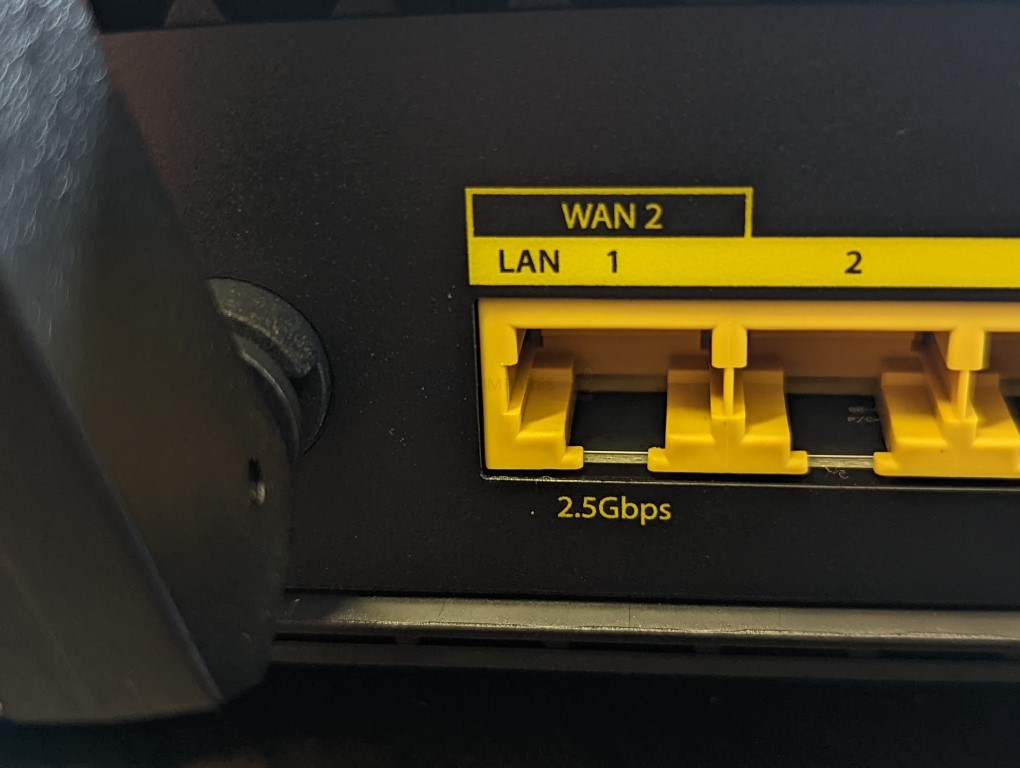
This 2.5G port can be used as a regular LAN port to connect to a 2.5GbE equipped NAS, a 2.5G switch or even directly towards a 2.5G equipped client device (either directly or via a simple $25+ USB-to-2.5GbE adapter – loads of versions are available to buy now here on amazon). Alternatively, the system will let you use it as a WAN port if your incoming internet connection is greater than a gigabit (eg more than 100MB/s or 1000Mbs) and the availability significantly greater than gigabit internet speeds worldwide has grown in multiple regions thanks to the likes of fiber becoming more affordable and the scalability of its cabling over time being less rigid than legacy installations of the 00’s. That said, it IS worth touching on something raised over on BlackVoid regarding those that apply custom VLAN IDs on their incoming internet connection and are hoping to take advantage of the 2.5G port as a WAN, as the persistent issue of custom IDs on secondary WAN ports (still in SRM 1.2) is still an issue that is awaiting a fix.
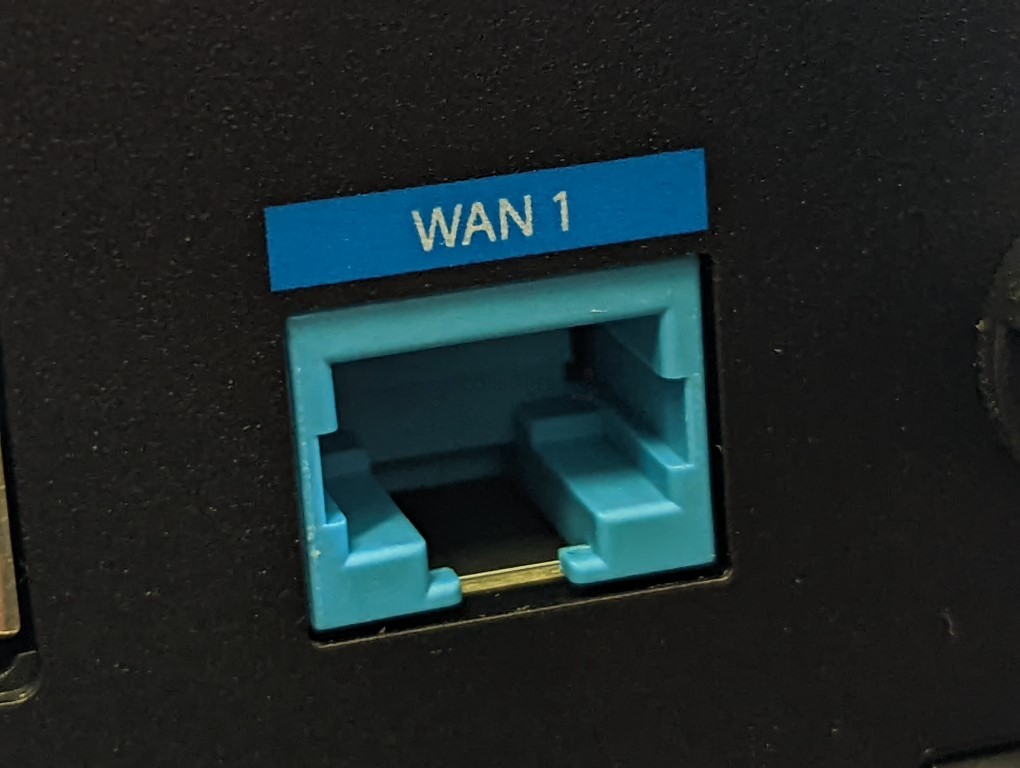
There is (of course) a dedicated WAN port on the RT6600ax router that is designed for your incoming internet connection. As the system features the option of deploying it as your primary router, or connected behind your existing router as an AP, it’s quite balanced in how you can choose to use it. Additionally, the SRM 1.3 software that you use to control and configure your router changes a number of options internally depending on whether you chose to deploy it either way. Choosing between these setups can be done during the initialization of the device, but can also be changed easily and in about 60-90 seconds from within the RT6600ax SRM browser GUI. Alongside the gigabit WAN and the 2.5GbE LAN/WAN choice, there are also 3 more standard 1GbE RJ45 (i.e copper) connections for the rest of your connected devices. These are..well… fine I guess. But many would argue that this is quite a tentative step into 2.5GbE for the router and the brand, with multi-port 2.5GbE routers in the market right now and even 10GbE SFP+ routers being available from brands like Netgear in their Nighthawk series for several years now, the RT6600ax arriving with a single 2.5GbE and 1GbE covering all the others do seem a little tight in 2022. These ports all support features such as the LAN/WAN failover, linking to vLANs in SRM 1.3, priority of service control and some incredibly sophisticated control customization within SRM in general – but we are still talking about 1Gb Ports and therefore still cutting apart slices of a much smaller potential cake.
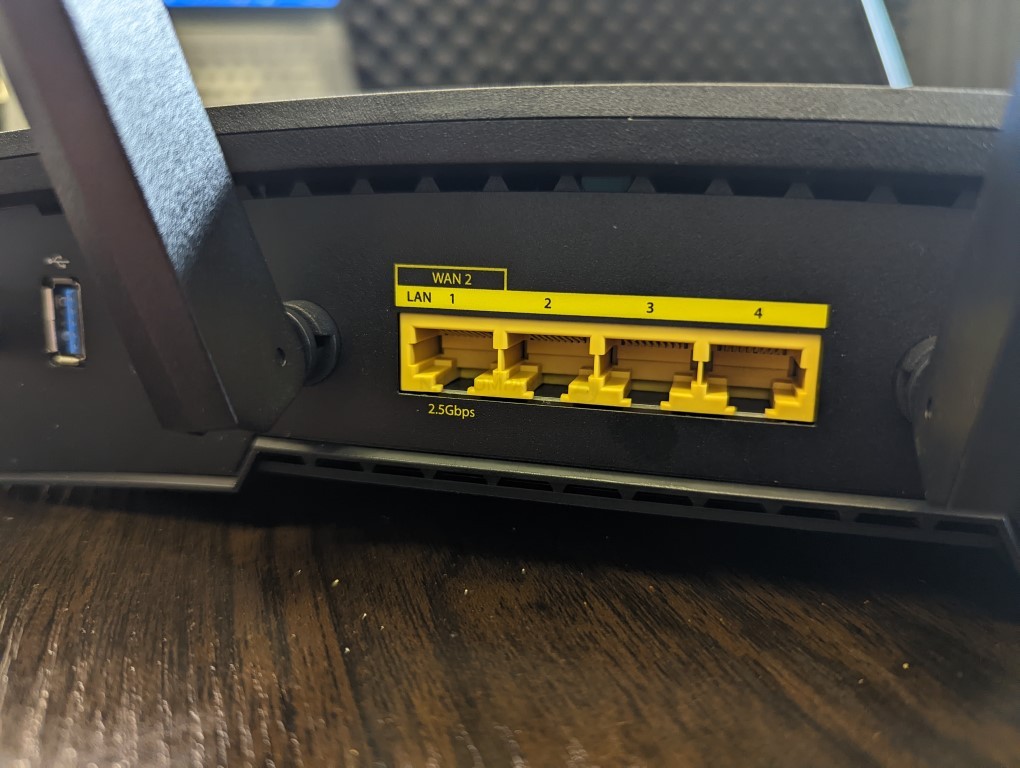
HOWEVER, where the Synology Router series still continues to consistently impress me is when I see the pedigree of their NAS development get divulged into their routers and SRM. By this, I mean that the simple USB Port on the RT6600ax port supports a wide variety of uses In the system with the likes of File Station, Download Station, Media Server and more. Rather than a tremendously basic breadcrumb directory being available to storage connected to the router, Synology allows you to interact with the external drive with the full file manager package. This includes browser file/folder display, archiving and extracting, sharing files (with lots of security/viability options), play locally or streaming over UPnP and DLNA. Additionally, you can make shared folders with ease and then mount those folders locally to your PC/Mac as mapped network drives, just as you would a NAS (with remote WebDav sharing also available). Alternatively, you can use the drive in conjunction with the download management tool (supporting BT/NZB/FTP/RSS and more) to automatically search and download files from the internet with ease. Then you have Media Server tools to stream your multimedia to home consoles, smart TVs, sound systems and more.
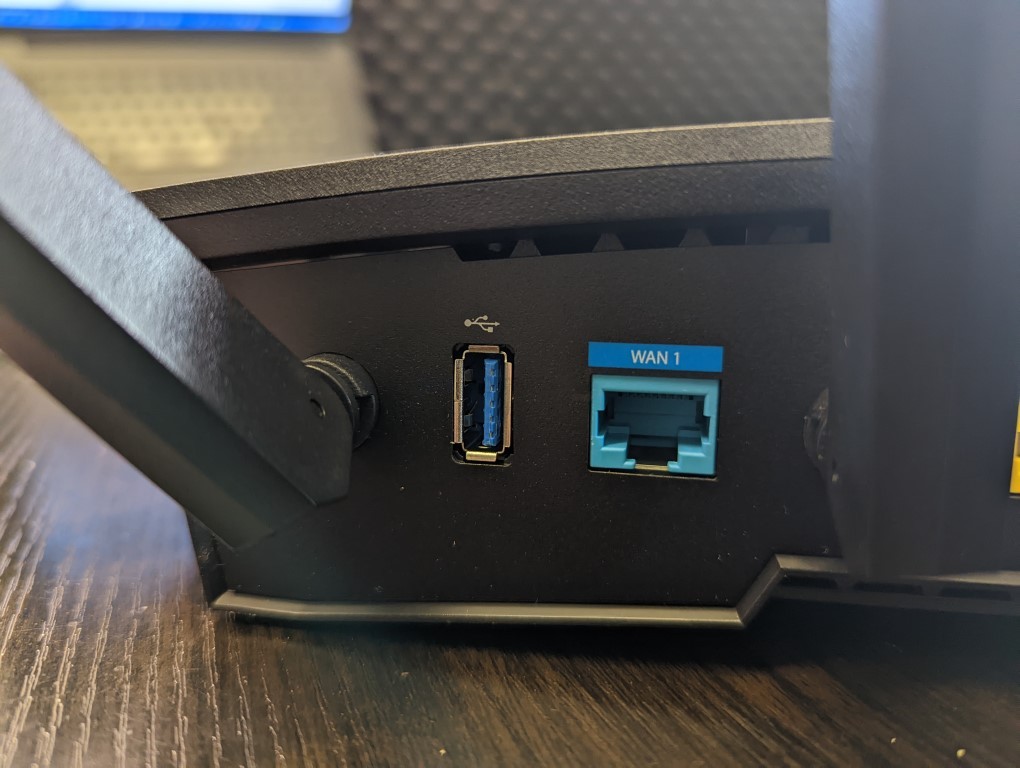
Yes, you need to get an external USB drive, but after that, you can run this router like a NAS-lite system very easily. Finally, you can use this USB port to connect a USB SIM dongle or Mobile phone in tether mode to attach an additional internet connection (either as the main internet source or as a secondary connection for use in a failover setup in SRM). I’ve barely scratched the surface on the utility of this port (with several more tools in the app center, as well as the support of the DS File and DS Get applications for iOS and Android) in the RT6600ax. However, this is somewhat undercut by the Rt6600ax router only arriving with a single port, despite the older RT2600aac arriving with two, meaning you will have to make a difficult choice about which accessories you need most (with USB multi-port adapters simply sharing the bandwidth and power inefficiently). The side of the Synology RT6600ax features a couple of buttons for activating the password-free WPS service between devices that do not have manageable GUIs and a button for disabling/enabling WiFi on the fly. Both are quite straightforward things and there isn’t much more to say on that really.
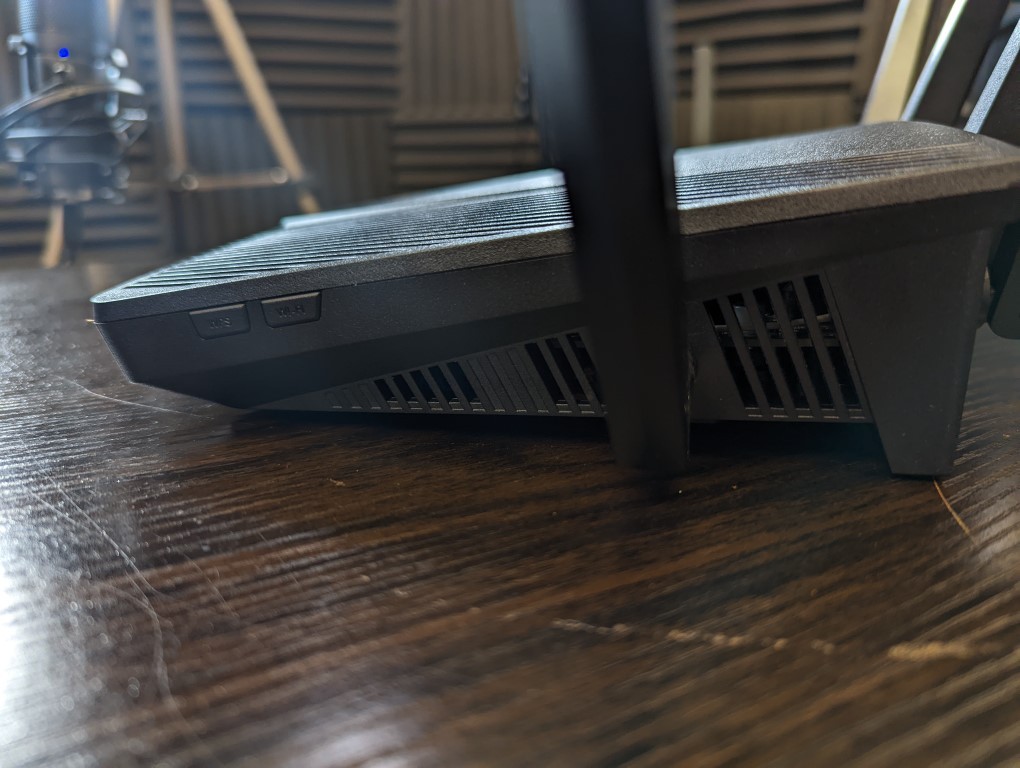
Overall, the connectivity and physical management of the RT6600ax are all pretty standard stuff. The fact there is only a single 2.5GbE port is something of a pain (forcing hard choices between external internet connectivity and shared bandwidth with devices such as NAS and larger bandwidth switches) and only a single USB port seems odd when you compare it against the older RT2600ac and RT1900ac with multiple ports and/or SD Card slot – but those aside, everything else about the RT6600ax ticks the boxes for me and what you have is a very sturdy, well designed and highly capable router here. Let’s discuss the internal hardware and see what exactly makes the RT6600ax tock.
Synology RT6600ax Router Review – Internal Hardware
With each release in the Synology router series, we have seen the general standard of the hardware improve (though the mesh system was something of an add-on really) and these improvements have more often than not affected the bandwidth potential of these devices. They all take advantage of MU-MIMO and multiple antennae, but the maximum frequency covered, the maximum simultaneous streams, wireless standards and total bandwidth differ quite substantially and that is only partially to do with the implementation of WiFi 6. Improvements in the CPU architecture and available memory also play their part, with the standard of hardware increasing at each tier too. Below is how the Most recent three Synology routers compare in their specifications, wireless compatibility and bandwidth:
| RT6600ax
|
RT2600ac
|
MR2200ac
|
|
|---|---|---|---|
| Class / band compatible standards |
AX6600 / Tri-band IEEE 802.11ax / ac / a / b / g / n |
AC2600 / dual band IEEE 802.11ac / a / b / g / n |
AC2200 / Tri-band IEEE 802.11ac / a / b / g / n |
| Maximum communication speed (5GHz band 1) |
4800Mbps
(160Mhz) |
1,733Mbps (4str / 80MHz) |
867Mbps (2str / 80MHz) |
| Maximum communication speed (5GHz band 2) |
1200Mbps | incompatible | 867Mbps (2str / 80MHz) |
| Maximum communication speed (2.4GHz band) |
600Mbps | 800Mbps (4str / 40MHz / 256QAM) |
400Mbps (2str / 40MHz / 256QAM) |
| WAN terminal | 1000BASE-T x 1 | 1000BASE-T x 1 | 1000BASE-T x 1 |
| LAN terminal | 2.5GBASE-T x 1 * 1 1000BASE-T x 3 |
1000BASE-T x 4 * 2 | 1000BASE-T x 1 |
| USB terminal | USB 3.0 Standard-A x 1 | USB 3.0 Standard-A x 1 USB 2.0 Standard-A x 1 |
USB 3.0 Standard-A x 1 |
| CPU | Qualcomm IPQ6018 Arm Cortex-A53 4-core 1.8GHz |
Qualcomm IPQ8065 Qualcomm Krait 300 2 core 1.7GHz |
Qualcomm IPQ4019 Arm Cortex-A7 4 core 717MHz |
| RAM | 1GB DDR3 | DDR3 512MB | DDR3 256MB |
So, as you can see, a notable increase in total available bandwidth, thanks to RT6600ax including support of the 160Mhz frequency, as well as more space to utilize with access up to the 5.9Ghz band. The antenna that the RT6600ax uses is divided into a 2×2 block and a 4×4 block internally and if you remove the external casing, you can see how their respective antennae cabling heads in different directions.
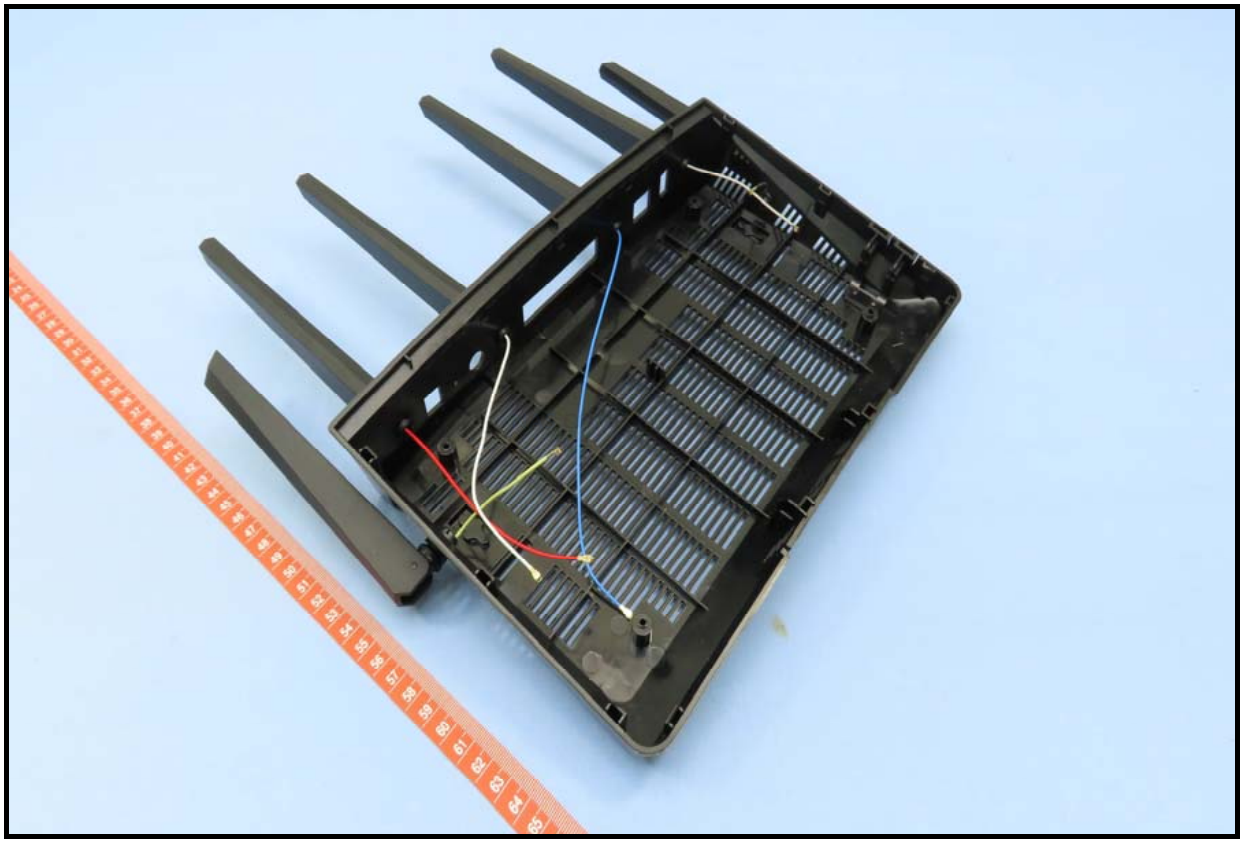
The antenna connects to the controller board in 2 different sectioned blocks on board. The controller itself is covered in a HUGE heatsink panel that you can just about make out in the system if you look closely through the vents. Again, as this system does not have access to an active cooling system (fans etc), its reliance on passive cooling and heat dissipation in peak periods is going to be hugely important.
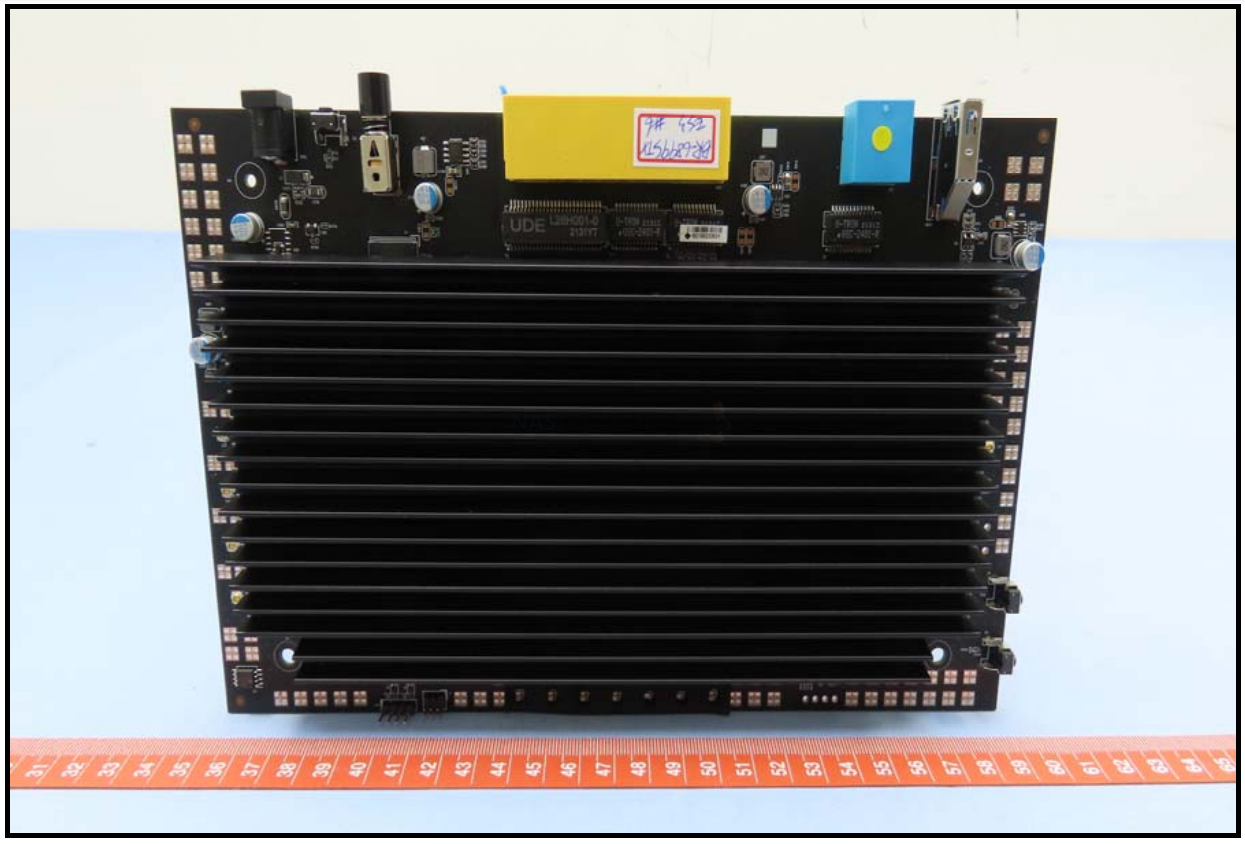
Removing this heatsink is no easy task and you can immediately see the huge amount of tactical/precise thermal padding that has been applied to the key areas inside the router. The heatsink itself is what seems to make up the bulk of the weight of the RT6600x in fact. Let’s take a closer look at that controller board and processor arrangement.
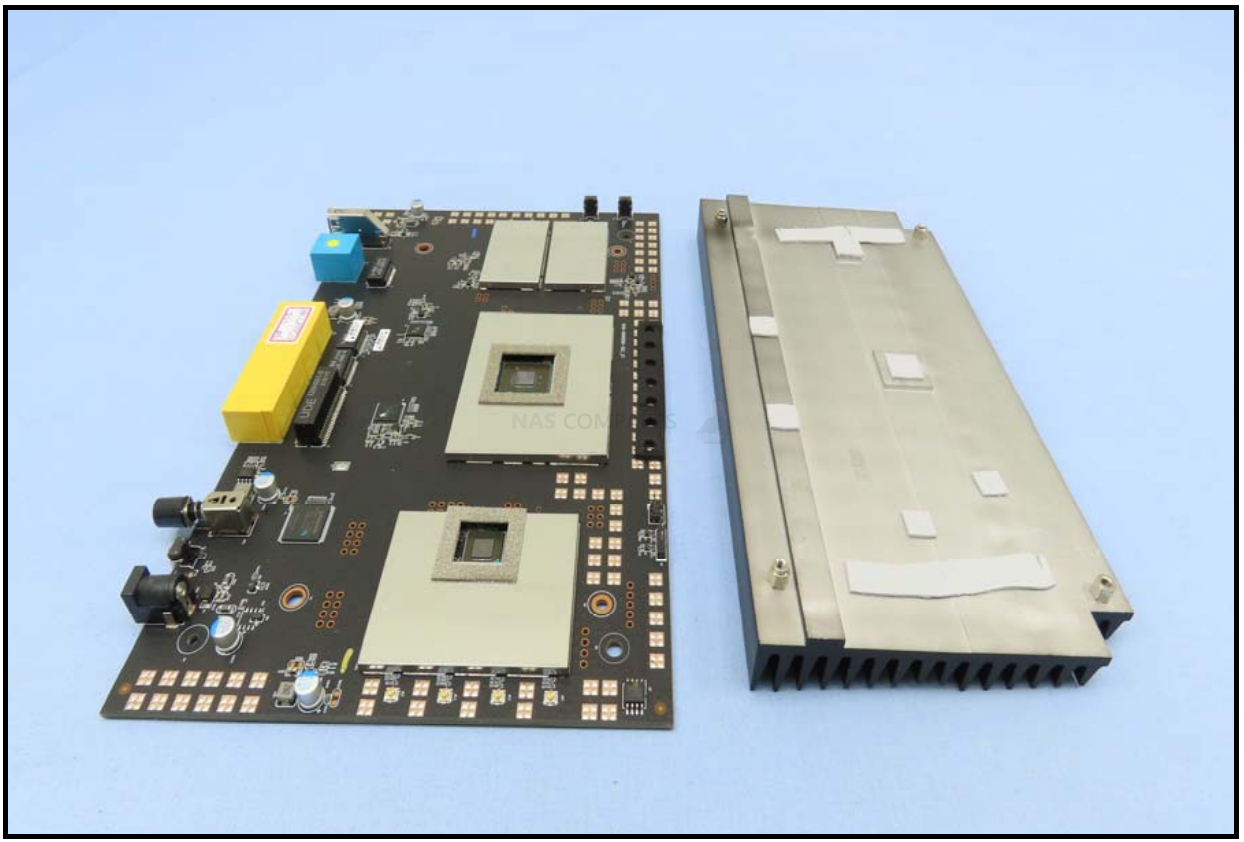
The three main quadrants of the controller board that are going to be doing all the work are pretty clear and have even been surrounded by a metal border to ensure the thermal padding and heatsink connection are as direct and efficient as possible. Let’s take a closer look at the components under those thermal pads.
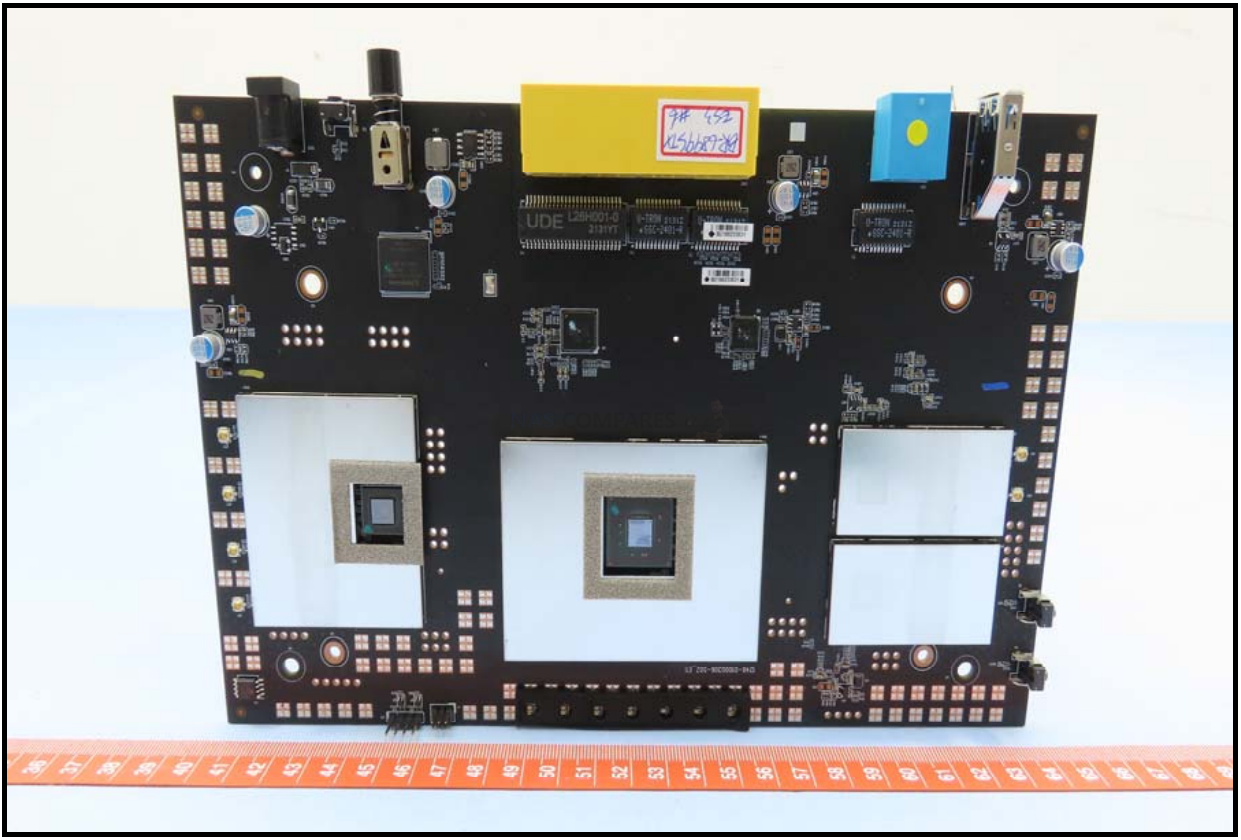
In the first block, where four of the antennae were connected, we find a Qualcomm QCN-9024 / QCN9024 WiFi6 MU-MIMO 4×4 network controller, that is reported to feature a 5.15GHz – 5.95GHz frequency, OFDMA: BPSK, QPSK, DBPSK, DQPSK, 16-QAM, 64-QAM, 256-QAM, 1024-QAM, 4096-QAM modulation and it supports 20/40/80/160MHz at 5GHz.
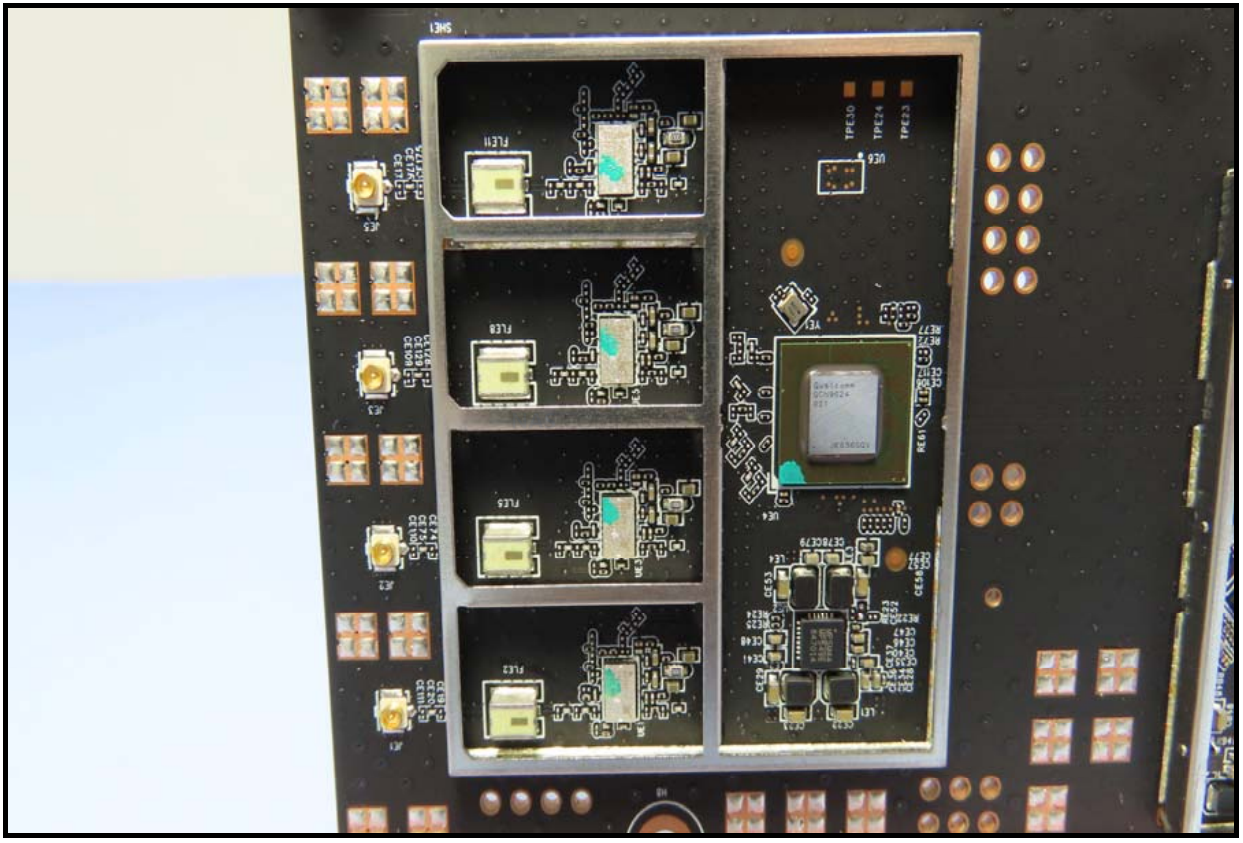
In the middle of the board, we find the brains of the outfit! The Synology RT6600ax Router runs on a Qualcomm Atheros IPQ6018 Quad-core ARM 64-bit A53, at 1.8 GHz. This processor (yes, I googled) is part of the Qualcomm Networking Pro 400 family and is a highly flexible but power-efficient Wi-Fi 6 (802.11ax) network solution, supporting 4 spatial streams of Wi-Fi 6 connectivity. The Qualcomm Networking Pro series supports next-generation Wi-Fi 6 features like optimized multi-user scheduling of both uplink and downlink MU-MIMO and OFDMA across all spatial streams. It also supports 1024QAM, BSS colouring, and WPA3 security, all delivered on an architecture designed to successfully associate and maintain connectivity for hundreds of client devices simultaneously. This processor also arrives with two visible blocks of memory which comprise 1GB of DDR3 Memory.
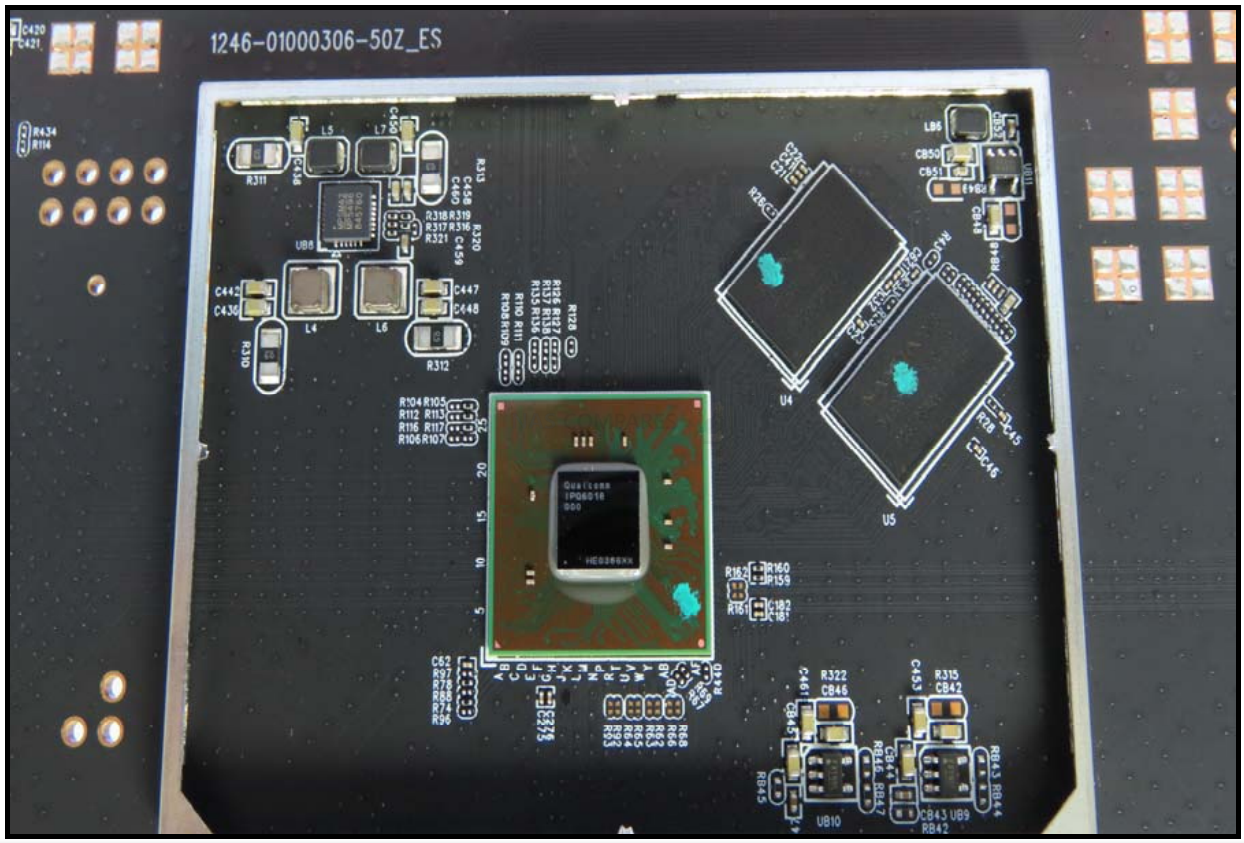
The third and final clearly separated block is where the other two antennas are connected into. Again, the details on these are a little unknown at the moment, with one block having the two antenna connectors and an additional Qualcomm processor and a further block below it that is not too clear. and I will revisit this area of the article as soon as I know more (or if/when someone can detail it in the comments!).
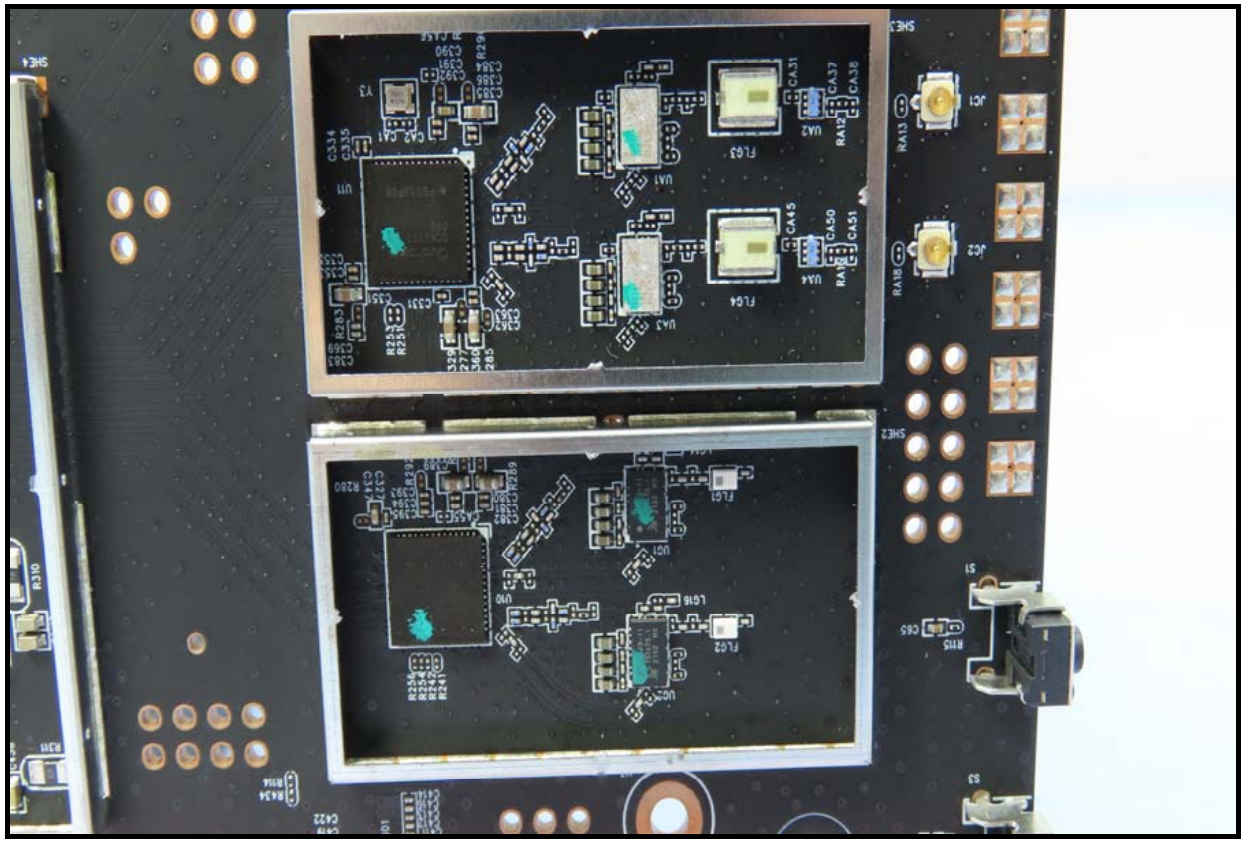
Finally, we have a single block/module of Kingston 4GB eMMC MLC flash (EMMC04G-M627). This is where the Synology Router Manager software and the changes you make/apply to the system will be applied and stored. Unlike Synology’s traditional NAS systems, the RT6600ax does not feature any internal SATA bays that you can easily populate with HDD/SSD storage media (though USB storage additions are possible). This is fairly common practice among intelligent/smart routers and in the case of Synology including their rather premium router management software (which receives regular updates and has a number of additional option add on features), I can imagine a decent chunk of that 4 gigabytes being used quickly. The RT6600ax arrives with the latest version of SRM 1.3 (Synology router manager) which, at the time of writing, is still unavailable on any other Synology Router system.
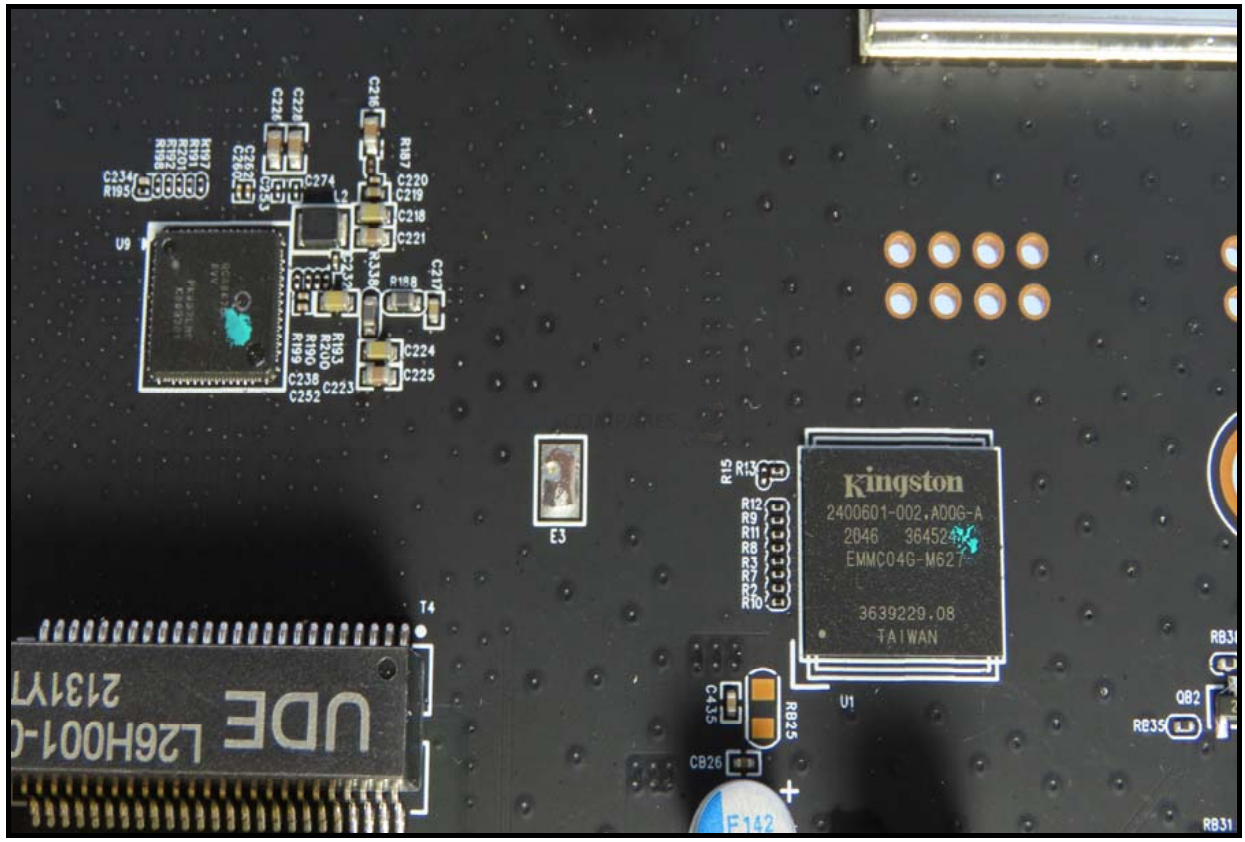
And that largely breaks down the hardware we have here inside the RT6600ax. This is all certainly a big step up from what we have seen so far from the brand in the RT6600ax and RT1900ac, but how does that translate in the software, services and its day to day use? Let’s why 5.9Ghz support on the RT6600ax is a bit of a game changer.

Synology RT6600ax Router Review Chapters Synology RT6600AX Review, ALL Parts - HERE Synology RT6600AX Review, Part 1, Unboxing & Design - HERE Synology RT6600AX Review, Part 3, Software, 5.9Ghz & Verdict - HERE |
Alternatively, you can watch the FULL review of the Synology RT6600ax over on YouTube below:
🔒 Join Inner Circle
Get an alert every time something gets added to this specific article!
This description contains links to Amazon. These links will take you to some of the products mentioned in today's content. As an Amazon Associate, I earn from qualifying purchases. Visit the NASCompares Deal Finder to find the best place to buy this device in your region, based on Service, Support and Reputation - Just Search for your NAS Drive in the Box Below
Need Advice on Data Storage from an Expert?
Finally, for free advice about your setup, just leave a message in the comments below here at NASCompares.com and we will get back to you. Need Help?
Where possible (and where appropriate) please provide as much information about your requirements, as then I can arrange the best answer and solution to your needs. Do not worry about your e-mail address being required, it will NOT be used in a mailing list and will NOT be used in any way other than to respond to your enquiry.
Need Help?
Where possible (and where appropriate) please provide as much information about your requirements, as then I can arrange the best answer and solution to your needs. Do not worry about your e-mail address being required, it will NOT be used in a mailing list and will NOT be used in any way other than to respond to your enquiry.

|
 |
Beelink ME Pro NAS Revealed
Best SOLID STORAGE NAS of 2025
Should You Worry About the NanoKVM Hidden Microphone?
Best Cheap NAS of 2025
Minisforum MS-02 Ultra - WHO IS THIS FOR??? (The First 48HRs)
Why People Use TrueNAS, UnRAID and Proxmox to Turnkey NAS (Synology, QNAP, etc)
Access content via Patreon or KO-FI
Discover more from NAS Compares
Subscribe to get the latest posts sent to your email.


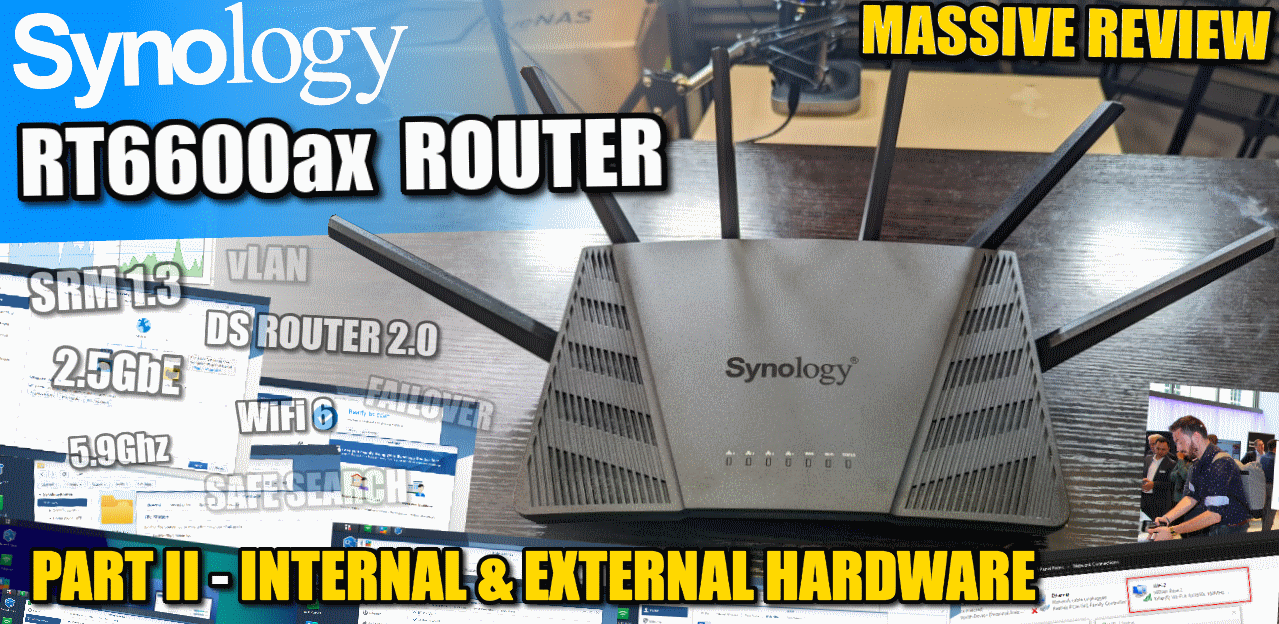
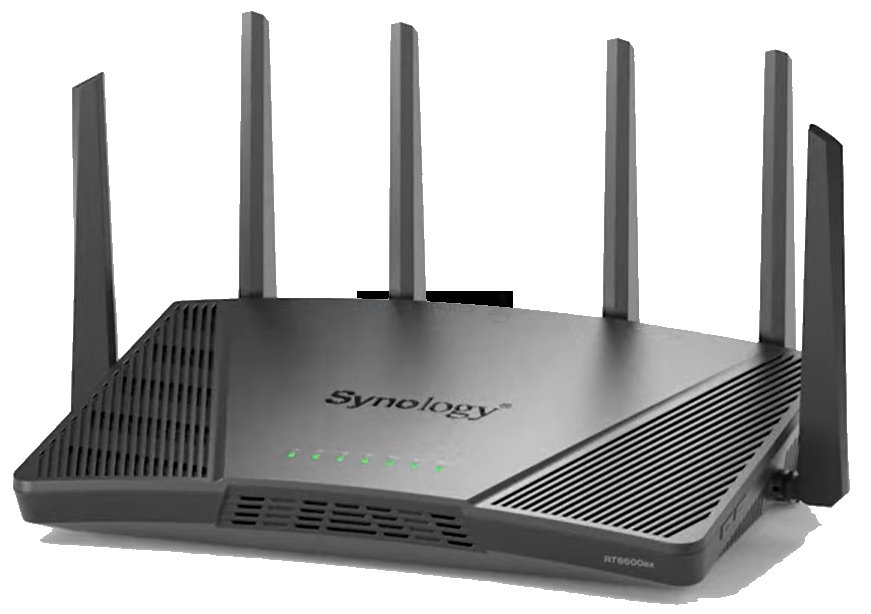
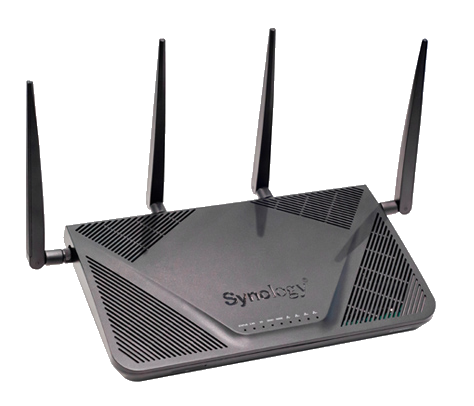
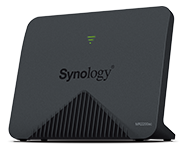



Awesome review! A person at the Synologt Community posted this:
New RTR6600AX 1.3.1-9316 using Anker 4-port USB extension
Working with Huawei 4G dongle E3372
and Samsung USB Stick BAR Plus 256GB
Having speed 98 MB/sec or 5500 Mb/min
REPLY ON YOUTUBE
can you remove the antenna
REPLY ON YOUTUBE
What an amazing review! Thank you for such great detail! Well done.
REPLY ON YOUTUBE
Seems like Synology missed a big opportunity to link the storage on the router to a NAS with some sort of one click easy setup but providing redundant storage. Connect the USB port to a NAS, and it sets up a volume for the router so you have resilient storage for threat protection etc.
REPLY ON YOUTUBE
As for the single USB port, I wonder if a USB hub would work with it? Might solve the issue.
REPLY ON YOUTUBE
Mbps is not equivalent to MB/s (mega bits vs mega bytes). To convert you simply have to divide by 8, and you get 600Mbps -> 75MB/s, 4800Mbps -> 600MB/s, and 1200Mbps -> 150MB/s
REPLY ON YOUTUBE
Awesome work dude!!! Love this breakdown!
REPLY ON YOUTUBE
Great insight. The 1 USB port is annoying. Otherwise it’s tempting to move from Draytek Vigor routers (which also support Openreach connections).
REPLY ON YOUTUBE
Is there a chance you can make a step by step guide how to set up proper,secure,separate network for IoT devices please? Or direct to such guide if already exists? Thanks.
REPLY ON YOUTUBE
hi, i hvae the 2600ac, don’t need wifi 6, but i really do need NAS, does 2600ac do NAS functions same as 6600 ? and also if i need NAS could i do so, if this 2600 is 2nd router, i guess an AP, after my cable router, connected LAN to LAN, thanks
REPLY ON YOUTUBE
does the 2600 support same NAS, as this 6600? or is 2600 only a Media Player? i need to save files to automatically to an external HD as a disaster recovery
REPLY ON YOUTUBE
FYI, As of Aug 24, 2022 (SRM Version: 1.3.1-9346) the RT6600AX now supports compatibility of mesh Wi-Fi system between RT6600ax, WRX560, RT2600ac, and MR2200ac.
REPLY ON YOUTUBE
I realize it would probably reduce performance on both fronts, but would any sort of USB hub / splitter be compatible, allowing you to use both a USB drive and mobile tethering or two USB drives?
REPLY ON YOUTUBE
I wish it had Directory server.
REPLY ON YOUTUBE
Bought this off your recommendation and am a bit disappointed.. not being able to granularly set times for websites makes this unsatisfactory. This device is clearly capable of so much more…
REPLY ON YOUTUBE
Hello… I have a concern about making ipv6 work on this router… I mention that the ISP assigned me a native address (the connection is made via PPPoE)…. I tried all the options to make it work and I didn’t succeed, but I still succeeded with 6to4, which doesn’t delight me. Is there any option to go in Native mode or is it a system problem? Thank you in advance.
REPLY ON YOUTUBE
So … I just got one for our small business.
Long story: Our existing WiFi access point went out three years ago and it was situation critical to replace it. So I picked up the only cheap consumer AP they had at BestBuy and set it up. It worked. We used it the past 3 years. But lately I had difficulty adding clients as the AP was tapped out. So … I decided to give the RT6600ax a try based on my satisfaction with other Synology products.
Short story: We love it. It was easy to set up and provides a lot of both security and control.
REPLY ON YOUTUBE
At one part in the video (https://youtu.be/rFwxKftbiuk?t=1166) you are talking about the USB port, cant you just plug in a usb hub and use multiple
REPLY ON YOUTUBE
Do you have an opinion on the Linksys Hydra Pro 6E Tri Band mesh in comparison to the Synology rt 6600. Trying to decide between the two.
REPLY ON YOUTUBE
Trying to decide between this synolovy vs the ax86u/gt – ax6000…. Any comments? I can get the 86 for a 100 euros cheaper. I am rooting for the synolgogy given I have two syno NAS home with whome I been quite happy. I can get the 6000 for the same price as the synology.
REPLY ON YOUTUBE
For this price you can build yourself a way better router with PFSense that has far more features and security.
REPLY ON YOUTUBE
Once again, an excellent review. Hats off and thank you.
REPLY ON YOUTUBE
What would your best recommendation be as of end 2022?
REPLY ON YOUTUBE
Hey. Can you create a firewall rules set video for Synology RT6600AX , please, for main network connection. Great videos! Thnx in advance!
REPLY ON YOUTUBE
There is no more Cloud Station (= Synology Drive) with rt6600ax which was very useful from previous model rt2200ac. No reviewers mentioned about it.
REPLY ON YOUTUBE
Very helpful! Do I understand you correctly that I can create multiple wireless networks (say 1 private and 1 for guests) and then assign Schedule and Content filtering to only one of those wireless networks? I assume devices connected to one network cannot see the devices connected to the other? I’m trying to find basically that exact feature to have a guest network for foster children in the home. Could I even assign a separate DNS server to those networks to implement parental controls with something like OpenDNS?
REPLY ON YOUTUBE
Dude this is all old and familiar features and ways to use their router. Most already know this. I thought this was going to be a video to point out the differences of the 6600 over the 2600. This video is mainly restating of stuff we already know
REPLY ON YOUTUBE
nice video! any recommendations on best type of external drive to use for NAS functionality? any way this would work with plex without lag etc?
REPLY ON YOUTUBE
I think the MR2200’s connection issues are a 1.3 issue. Mine have been dropping off about once a week and I’m still on the 2600ac, not only that, but their light patterns have been behaving very strangely. Like they’re connected, but every now and then, the WiFi symbol will scroll the lights from bottom to top for 20min, and then go back to normal.
REPLY ON YOUTUBE
Be cool if it had a couple of m.2 nvme slots. Hopefully the next version does — this way USB can be used for non-storage applications.
REPLY ON YOUTUBE
why steal FCC pics and pass them off as your own in your review? lmao
REPLY ON YOUTUBE
Its “Rauuuteeer” written “router”…… “roooter” is what my friend does when he has one night stand
REPLY ON YOUTUBE
???? i pacchetti di ???? installazione, installazione ???? i pacchetti di installazione ???? sei proprio un co one ????
REPLY ON YOUTUBE
Hi Rob. Ive been a subscriber for many years, your videos have helped me
to decide to buy many Synology nas units, my first being the ds212plus
my latest the ds1821plus. Like you I`m from the uk so I`m hoping you
can help me with a question I cant get my head around.
My internet currently comes from Plusnet with an adsl connection/router
that as you know comes down the standard phone line connector (via that splitter/filter).
This router has a single Cat5e cable connected to my Q-Nap QSW-M408C, then around the house
to all the pc`s nas etc with Cat5e or Cat6.
Plusnet have just offered me FTTP so I`m hoping to upgrade in September. And after watching
your video on the Synology RT6600ax with its Vlan feature I would love to buy this and setup
two Vlans, one for all my devices and the second separate Vlan for my Kids stuff.
(I do not want my Kids having access to my shared folders etc)
What I do understand is that once FTTP is installed this new connection is just a standard
Cat5 or Cat6 Cable that connects to the Wan socket on a router.
But what i`m not clear on is this:
Does the RT6600ax completely replace the Plusnet router?? and if your answer is yes, do I
need to setup into the Synology RT6600ax settings some sort of the old Plusnet/Connection
/account/username stuff like I had to with my Adsl router??
I assume Plusnet will send me a pre configured FTTP router and my Best guess would be I do not use
this Isp router at all. The Synology router will just connect to the internet in its place
without the older Plusnet/Connection/account/username etc settings. And then just leave me to setup
its DHCP, Lan, Vlan stuff myself?
The above might sound like a silly question but after spending a lifetime buying my own Dialup modems
(first modem was 9600, 14,4 then 28.8k) and then plenty of Netgear adsl routers over the years the one constant
headache was trying to get the correct login settings to work, since most normal people just used the
pre configured hardware.
I will appreciate any ideas yourself any anybody else has. Many Thanks F S
REPLY ON YOUTUBE
Been using Asus routers for about a decade. Ordered this Synology rooter tonight to upgrade from my Asus Ac2900 and after watching this video I think I made a good choice.
REPLY ON YOUTUBE
Thanks for the comprehensive review. All the infomation I needed. I’d buy one in a heartbeat but until they support my exisitng Synolgy mesh I’ll have to wait.
REPLY ON YOUTUBE
Has the WiFi MESH probelem/restriction been resolved? That is connectivity between the RT6600ax and the RT2600ac. If not, it’s a no way purchase for now.
REPLY ON YOUTUBE
What about adding a USB 3 hub to overcome the limit of 1 port ? ????????????
REPLY ON YOUTUBE
My new rt6600ax refuses to go above 100Mbps download, and suggests (via popup in SRM) it may be the cable. My older router (which this one is supposed to replace) is getting nearly 500Mbps download on my 16″ macbook pro m1 ultra, and my synology NAS is showing around 940Mbps on ethernet (again, on the older router). But on the new 6600, my NAS via ethernet is maxing at around 94Mbps 🙁 Any ideas? Very frustrating.
REPLY ON YOUTUBE
@NASCompares does it support USB hubs?
REPLY ON YOUTUBE
Hi there,
Thanks a lot. So after your review i bought the RT6600ax. So now i need to upgrade my home network to manage and separate my iot network (home assistant, cam, aquara, shelly, etc.) from my home / work network. Can you help on guiding me to choose a switch (i guess it will be managed) and give so hints on configuration (both the router & the switch). Maybe i should add that today y network is build on the RT2600 plus 2 MR2200 because of concrete.
Philippe
REPLY ON YOUTUBE
Does the dns package support local network dns entries? I currently use ddwrt and have local dns records configured for a few server IPs…that way my desktop and mobile clients can connect to files and emails using those fqdn names locally
REPLY ON YOUTUBE
Generally, how do you like the Synology router / NAS vs the Asus router / NAS? (Assuming similar level NAS of course.)
REPLY ON YOUTUBE
“ROW-tah”
REPLY ON YOUTUBE
The biggest flaw in synology product line – its not complete. No switches. No PoE. this router show again cheap plastic 4 port ethernet on the back. There is no way to build even small size home network with just router. They should add two 12/24 port switches, with/without PoE and SFP support running the same software. together with NAS they can have a good solution
REPLY ON YOUTUBE
Can you restore a RT2600 configuration onto the RT6600?
REPLY ON YOUTUBE
Great review – thank you. What wireless adapter did you use on your laptop for testing this?
REPLY ON YOUTUBE
Does it allow link aggregation of 2 x GE ports to Synology series like DS720+ or DS920+?
REPLY ON YOUTUBE
Finally, finally, finally! I love your reviews.
REPLY ON YOUTUBE
Ill agree to a Great rewiew, and you have mentioned a lot of things which are really helpfull (not for me) but for other sure.
What i want to comment on, is your surprise that the RT6600ax comes with the SRM 1.3 and the older devices are still SRM 1.2, well this is what synology was presenting from the “Day One” when the RT6600 was presented by end of 2021 so no surprise for me here, the SRM 1.3 for the RT2600 and MR2200 will be or according to synology should be in June so we need to wait for this one as well.
What im glad and really glad that the support for the MR2200 and the mesh is there, and also with another RT6600, which you cannot do with a RT2600 so a huge step forward i like, AAAANND well if you do a MESH then you will have TWO USB ???? Ports, the question is if the can be used but i think this is an alternative for those who will be having a MESH network.
REPLY ON YOUTUBE
Synology does produce nice devices but it’s all fine when you have warranty. When it’s over and your device will stop working, synology won’t repair it even if you could just pair for the repair. They just dont give a f**k. Think twice before you buy an synology router.
REPLY ON YOUTUBE
This looks like an unboxing, not an actual review. You’re holding a device that is capable of sophisticated beam-forming, but we don’t have any speed tests / comparisons / ping results for a typical wood-frame house for example. I like the new features, but I was really into that I’d just set up a pfSense box, or a UDM pro. Why would I buy this thing instead of a cheaper WiFi6 AP/router? Why would I buy it instead of a UDM pro + AP? I had an ac2200 before and I returned it, because SRM is a far cry from DSM, and here they are cramming features into a device with just 1GB of RAM. If you’re saying that it strikes the perfect balance, I’d like to see come figures proving that. Otherwise the video should be titled either “unboxing” or “first impressions”.
REPLY ON YOUTUBE
Is RT6600ax prepaired for the new homeautomation standard Matter? Is that nessasary?
REPLY ON YOUTUBE
Is it possible to create “Web Filter” on a schedule? For example from 4PM to 8PM can be a “homework” time slot where only allowed whitelisted websites are available?
REPLY ON YOUTUBE
That’s for a great review. Worth watching it all. Look forward to future videos on this router.
Three questions; Do you think Synology will release a WiFi 6 upgrade to the MR2200ac? Maybe an MR6600ax?
Also, can devices be assigned a frequency? Orbi takes control of that an many times connects 5GHz devices (like FireTV) to 2.4GHz when only in the next room. ????????♂️
Lastly, I’m sure the answer is yes, but I didn’t see it covered, can you assign static IP’s or reserve IP’s for devices?
Thanks again! I really love the ability to create a VLAN that merges with an SSID to isolate my IoT.
REPLY ON YOUTUBE
The usual lan limitation of all router you have only one 2.5gbe port. Now a router should have at least one 2.5 gbe (Better 5gbe as in Italy a phone company started to sell a FTTH 5gbe fiber connection at a good price in selected city) wan AND one 2.5 lan port (better 5gbe) and let a multi-g switch to manage the signal. Also it should manage analog phone otherwise we must pay for the router that provider offer
REPLY ON YOUTUBE
Very interesting review so thank you. You say you will be reviewing the Asus RT AX series….will you be doing this one?
ASUS RT-AX89X 12-Stream AX6000 Dual Band Wi-Fi 6 802.11ax Router
Cheers
REPLY ON YOUTUBE
I think I will wait for Asus Gt axe 16000
REPLY ON YOUTUBE
Felicidades, es un buen ejemplo.
250 sentadillas son unos 4.FO/L-J27g1 muchas y un buen ejercicio.
5:25 Se deja ver que hay muy buenos resultados ????????
Saludos desde la Cd.. de world ????????????
los mortales abian apreciado tan hermosa mujer.
REPLY ON YOUTUBE
Can you restrict wifi at the same way as with lan regarding to IOT? A vlan video would be nice if you did here to.
REPLY ON YOUTUBE
Usb hub?
REPLY ON YOUTUBE
Hey
Thanks so much for this very informative Video! 2 Questions though:
1. Can you connect the router to a VPN, so your whole home internet traffic is secure? If so, what VPNs can be used?
2. As some might know, wireguard is a very simple, fast and secure VPN solution. Is it possible to run wireguard as a server or as a client on this router? If there’s a option to install packages, really one should be able to potentially develop or manually install the option for wireguard as a client and perhaps even as a wireguard VPN server…..
Many thanks!
REPLY ON YOUTUBE
Does this support a wired backhaul for a mesh with two of these systems?
REPLY ON YOUTUBE
Great review – thank you. Is there any way to limit the internet bandwidth available to a specific user / device or IP range? I usually allocate only 80% of the available internet bandwidth to make sure that no single user or device hogs all the bandwidth and that my downloads always have bandwidth available without impacting anyone else.
REPLY ON YOUTUBE
Nice review, but with no mesh, WiFi 6e, or 10Gbe, it’s a solid pass at this price.
REPLY ON YOUTUBE
Great review! I hate seagulls… Look at my stupid face… and last but not least, the dogs Dangleys… You crack me up!! Nice Router!
REPLY ON YOUTUBE
Loved my 2600ac and as a Parent it allowed me to easily be a truly evil bastard cutting off internet to all my sons devices when he was in trouble and at bedtime with a schedule 😉
REPLY ON YOUTUBE
@NASCompares Did they drop the SD card slot as well as the 1 USB that you talk about?
REPLY ON YOUTUBE
Another Synology hardware fail… wake me up when they get their sh1t together.
REPLY ON YOUTUBE
Thank you for this review. I didn’t know that buying this one to replace RT2600 would render my 2200 MESH obsolete until SRM1.3 support. Just saved me a lot of money.
REPLY ON YOUTUBE
There is amateur radio within the 5.9ghz band.
https://en.m.wikipedia.org/wiki/5-centimeter_band
REPLY ON YOUTUBE
Does Synology sponsor you? It seems you are very keen on Synology products. It made me think twice and wonder if you were sponsored nice shirt ????
REPLY ON YOUTUBE
About the USB port thing: while an extra cost, sure, is it possible to purchase a little USB hub, plug that in, and then plug multiple HDDs, a 4G dongle, etc.?
REPLY ON YOUTUBE
Ecellent review! Really appreciate the time you put into this!
REPLY ON YOUTUBE
shit router+with standarts at stonetime….no 10 gb is a …….for this bugs i buy 3 asus with the same outdatet shit…lol…
REPLY ON YOUTUBE
.. a long video
REPLY ON YOUTUBE
Why would you want to mesh a WiFi 5 Router with the new RT6600ax?? Surely the idea wuld be to wait for their (Probably in development mesh) device?
REPLY ON YOUTUBE
Awesome review!!
Btw, Rooter is a great drinking game. Cheers!!
REPLY ON YOUTUBE
I have a Net Gear r9000 x10, do you think this rt6600 would be a good upgrade? R9000 has started dropping Wi-Fi and kicking me out of plex, on paper they seem to have similar specs, although net gear have tried to kill the router with firmware numerous times.
REPLY ON YOUTUBE
I still have a Dislike button on an iPad Pro 12.9. What’s missing is the counter on the dislike button.
REPLY ON YOUTUBE
Will there be a chance that Synology will finally support HomeKit Secure Router in the near future?
REPLY ON YOUTUBE
Great video. Btw, note that 3G/4G dogles are at EOL support by SRM (as per the Synology Compatibility List) so I am not sure how viable alternative one has for a backup WAN connection.
REPLY ON YOUTUBE
Just wondering. The new software disabled support for 4G dongle. But I noticed in your video around minute 31.45 that there is a mobile network section in the settings.
I hope I can use my SIM with dongle. Been wanting to switch to Synology router for the longest time but couldn’t due to the poor support for SIM card.
REPLY ON YOUTUBE
It would be wiser to divide a video this long into many videos, it would make you more revenue and get you more views.
REPLY ON YOUTUBE
I swear you’re worst than the seagulls ????????
REPLY ON YOUTUBE
oh been waiting for a week for this, just got ds920+ from 415+ now thinking time to upgrade the wifi mesh
REPLY ON YOUTUBE
Thanks for the thorough review but this is too little too late from Synology as an existing customer… I welcome SRM 1.3 VLAN and multiple SSID but these were promised and should have been out several years ago however they stalled SRM development to focus on DSM7. It has left a really sour taste in my mouth as I invested heavily with RT2600ac and 2x MR2200ac (along with multiple NAS) but have had to relegate the RT2600ac to just doing WiFi as an access point because of all bugs and the lack of development. I’m now using a PFsense router which is far more stable and has had better features, scalability and resilience for years. I’ll look at SRM 1.3 when it lands for my existing devices but when it is time to upgrade my mesh WiFi hardware I have no loyalty to Synology or confidence in their support for their network devices so i’ll be looking at other offerings.
REPLY ON YOUTUBE
300USD! The Unifi DreamRouter at 200USD just killed it before it even was launched.
REPLY ON YOUTUBE
32:41 when you said “I just had to kill..” I thought the seagulls? 😀
REPLY ON YOUTUBE
Robbie, you mentioned that it does not pair with the current RT2200 routers for meshing? Only in RSM 1.3? When will that be released?
REPLY ON YOUTUBE
It looks like it is supposed to be a hat for one of Sauron’s underlings.
REPLY ON YOUTUBE
Indeed. About bloody time. Been waiting for this review for a dog’s age.
REPLY ON YOUTUBE
Please do a Asus rt-ax86u vs Synology rt6600ax review please please
REPLY ON YOUTUBE
Can one not connect an expansion USB device…IE: multi port dongle?
REPLY ON YOUTUBE
Does it come with anti-seagull radiation features?
REPLY ON YOUTUBE
That seagull was probably after your chips…????
REPLY ON YOUTUBE
What do you think of the Orbi’s?
REPLY ON YOUTUBE